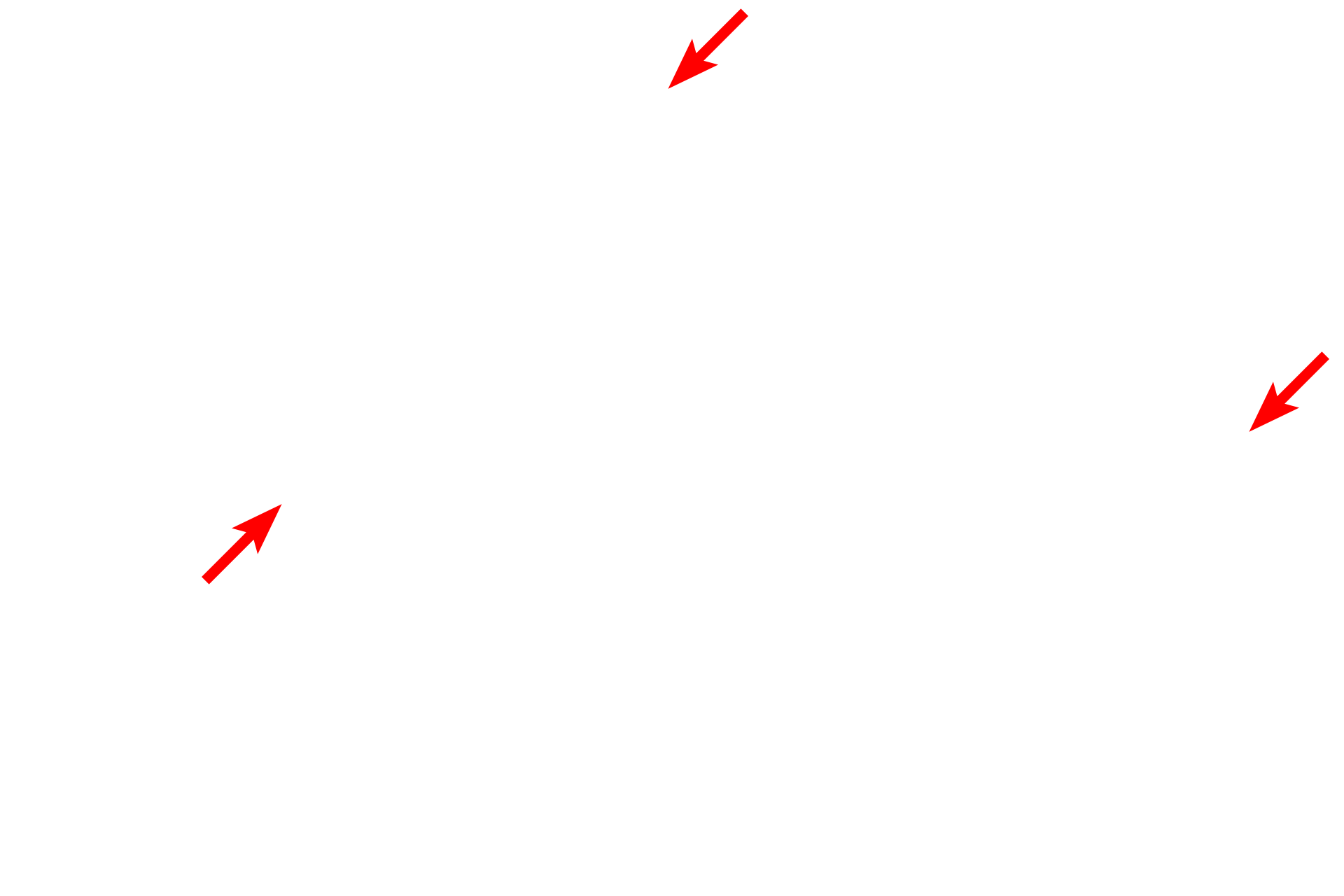
Continuous capillary
This slightly tangential section of a capillary reveals a wall formed by four endothelial cells that form a mosaic as they compose the wall. None of their nuclei are visible here. The margins of adjacent endothelial cells demonstrate junctional complexes, including tight junctions to reduce leakage from the lumen. The plasma membranes often interdigitate at these junctional sites. A higher magnification view of each these junctions is shown in the lower panels. 10,000x

Junction 1
This slightly tangential section of a capillary reveals a wall formed by four endothelial cells that form a mosaic as they compose the wall. None of their nuclei are visible here. The margins of adjacent endothelial cells demonstrate junctional complexes, including tight junctions to reduce leakage from the lumen. The plasma membranes often interdigitate at these junctional sites. A higher magnification view of each these junctions is shown in the lower panels. 10,000x

Junction 2
This slightly tangential section of a capillary reveals a wall formed by four endothelial cells that form a mosaic as they compose the wall. None of their nuclei are visible here. The margins of adjacent endothelial cells demonstrate junctional complexes, including tight junctions to reduce leakage from the lumen. The plasma membranes often interdigitate at these junctional sites. A higher magnification view of each these junctions is shown in the lower panels. 10,000x

Junction 3
This slightly tangential section of a capillary reveals a wall formed by four endothelial cells that form a mosaic as they compose the wall. None of their nuclei are visible here. The margins of adjacent endothelial cells demonstrate junctional complexes, including tight junctions to reduce leakage from the lumen. The plasma membranes often interdigitate at these junctional sites. A higher magnification view of each these junctions is shown in the lower panels. 10,000x

Junction 4
This slightly tangential section of a capillary reveals a wall formed by four endothelial cells that form a mosaic as they compose the wall. None of their nuclei are visible here. The margins of adjacent endothelial cells demonstrate junctional complexes, including tight junctions to reduce leakage from the lumen. The plasma membranes often interdigitate at these junctional sites. A higher magnification view of each these junctions is shown in the lower panels. 10,000x

Basal lamina
This slightly tangential section of a capillary reveals a wall formed by four endothelial cells that form a mosaic as they compose the wall. None of their nuclei are visible here. The margins of adjacent endothelial cells demonstrate junctional complexes, including tight junctions to reduce leakage from the lumen. The plasma membranes often interdigitate at these junctional sites. A higher magnification view of each these junctions is shown in the lower panels. 10,000x